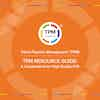Workforce Development and Training
When America works, economies grow, opportunity thrives, and communities prosper.

Workers need new and better pathways to quality careers. At the same time, businesses need top talent to compete — whether in their own communities or on the world stage. We solve both sides of the equation by bridging crucial communication gaps between business and education and harnessing new technologies to support a well-run talent marketplace.
We know that success must include those underserved by our outdated career and education systems. That is why we work to ensure our programs reflect the broad, diverse talent pool our nation offers.
Programs

Stories of Education and Workforce in Action
Across our nation’s talent pipeline, we explore the stories of employers investing in the workforce of today and tomorrow to close the skills gap.
Read the Case Studies
A Public-Private Financing Approach for Upskilling and Reskilling in a Dynamic Economy
Skills-Based Hiring and Advancement
Employers are facing major challenges in closing their skills gaps, diversifying their workforces, and remaining agile in a rapidly changing global economy. As a result, many employers are pursuing skills-based hiring and advancement strategies. Learn about how the U.S. Chamber Foundation's T3 Innovation Network is providing a framework for matching employer needs with skills, and creating more opportunities for learners and workers.
- Benefits Cliffs: Effects on Workers and the Role of EmployersWe examine benefits cliffs – the loss of eligibility for public safety-net programs and benefits they provide as income rises above eligibility limits.Read More
- Skills-Based Hiring & Advancement BriefEmployers are facing major challenges in closing their skills gaps, diversifying their workforces, and remaining agile in a rapidly changing global economy. As a result, many employers are pursuing skills-based hiring and advancement strategies.Read More
- America Works InitiativeHelping your company and our country solve our workforce challenges.Learn More
Latest Content
The JDX is now taking an important step forward to move from pilot to real-world implementation.
Strong collaboration between employers and opportunity population-serving organizations can help ensure a more diverse talent pipeline and connect those with limited access to opportunities to meaningful, sustainable careers. The new Talent Pipeline Management Guide provides resources and strategies that can build stronger relationships with employers and opportunity populations.
Today, the Center for Education and Workforce’s T3 Innovation Network™ is launching a new resource hub to support the development of learning and employment records (LERs). LERs are digital records that will document learning wherever it occurs, including at the workplace, through an education program/experience, or through military training.
The economy and the labor market that powers it has undergone unprecedented transformation in recent months. Collaboration between the business and education communities is more important than ever. As labor markets adapt, communication between employers and educators—and the agility to adjust when needed—is critically important.
Leaders across sectors are investing time and resources in forward-looking models to address our workforce challenges for the talent we need now and into the future. One key component of this is building stronger partnerships between employers and the CTE community—bridging the communication divide by providing each with an orientation of the other. This resource guide serves not only as an introduction to the TPM framework, but that more CTE systems and programs can begin leveraging and benefiting from this authentically employer-led movement.













